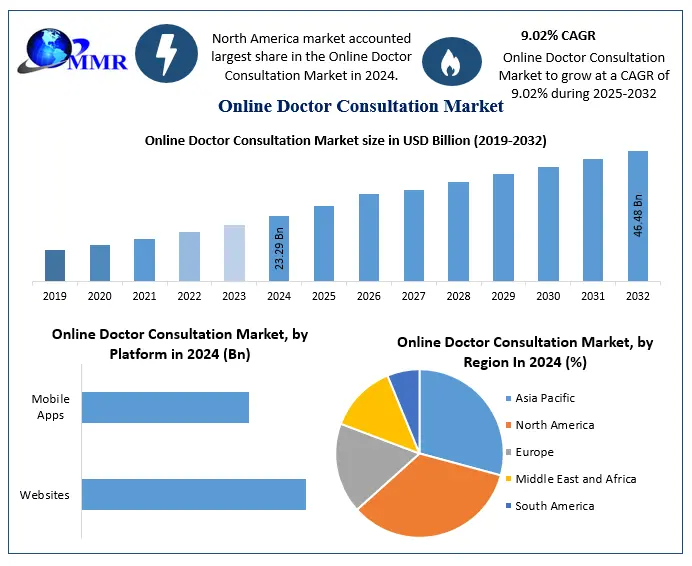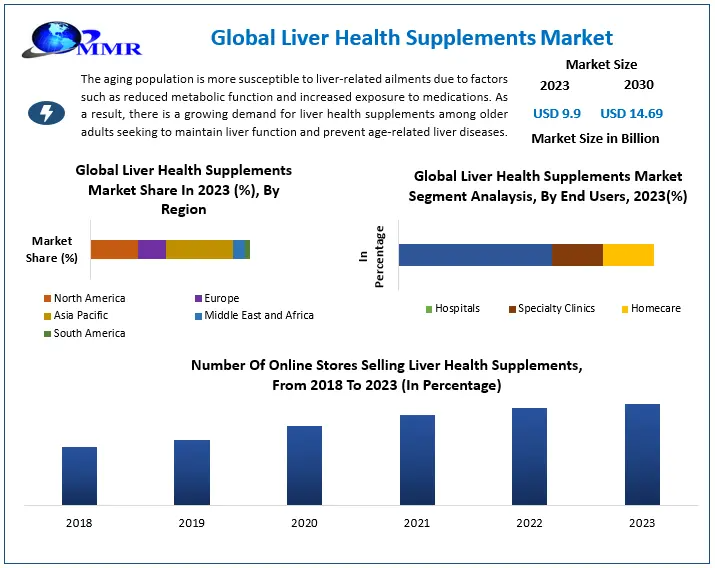Genomics Market
Market Estimation & Definition
The Genomics Market was valued at approximately USD 35.6 billion in 2024 and is forecasted to grow at a compound annual growth rate (CAGR) of 15.35% between 2025 and 2032, reaching an estimated USD 111.5 billion by 2032 . Genomics encompasses the comprehensive study of genetic material—ranging from genes and coding DNA to mitochondrial and chloroplast DNA—and includes both sequencing and interpretation methodologies.
This market encompasses a spectrum of products and services covering genome sequencing systems, consumables, kits, reagents, software platforms, and bioinformatics services. These offerings serve applications across healthcare, agricultural biotechnology, drug discovery, personalized medicine, and research. The market’s rapid expansion reflects breakthroughs in sequencing technologies, increased investment in genetic research, precision medicine, and the adoption of genomic data in public and private health systems worldwide.
Market Growth Drivers & Opportunity
a. Declining Costs and Advancing Technology
The cost of whole-genome sequencing has plummeted over the past decade, now approaching approximately USD 1,500 for whole-genome sequencing—making large-scale human genomic studies economically viable . Technological strides in next-generation sequencing (NGS), PCR, microarrays, and cloud‑based bioinformatics have empowered laboratories and clinics around the globe to perform genomic assays quickly and affordably.
b. Rising Personalized Medicine
Healthcare providers increasingly leverage genomic data to tailor treatments to individual patients—optimizing drug efficacy and minimizing adverse effects. This trend is catalyzed by growing healthcare demands, including chronic and genetic diseases, which drives precision and personalized medicine initiatives. Notably, genomic profiling is transforming oncology, rare-disease diagnostics, pharmacogenomics, and population health screenings .
c. Government Funding and National Genomic Programs
Governments globally are stepping up investment in genomics. For example:
-
India’s “Genome India Project” is sequencing 10,000 individuals to build a national reference genome;
-
Canada recently allocated USD $33.4 million to support 36 genomics research projects;
-
The U.S. National Institutes of Health and other federal agencies continue heavy investment in life-science research infrastructure .
These initiatives enhance foundational infrastructure, foster innovation, and accelerate clinical adoption.
d. Agricultural and Biotech Applications
Beyond healthcare, genomics are applied in crop improvement, livestock breeding, environmental biotechnology, and pathogen surveillance, expanding the market’s reach into agriculture and non-medical sectors. This diversification opens new revenue streams and shields the market from sector-specific volatility.
e. Decreasing Costs for Genetically Modified Organisms
Production of genetically modified plants and animals has become more cost-effective thanks to advances in sequencing and genetic manipulation tools, stimulating demand in agricultural genomics .
f. Biotech and Pharma Collaborations
Collaborations between academic institutions, biotechnology companies, and pharmaceutical firms for biomarker discovery, drug target identification, and companion diagnostic development are fueling market growth.
Market Opportunity
-
The rise of consumer genomic services (e.g., ancestry, wellness tests) presents a major growth avenue.
-
Increasing adoption of long-read and single-cell sequencing technologies offers new research depths.
-
Integration of AI and machine learning in genomic data analysis is enabling novel insights and personalized healthcare solutions.
Segmentation Analysis (from the report)
The genomics market is structured across multiple dimensions:
By Product & Service
-
Products: Sequencing instruments/systems, consumables, reagents, microarrays, PCR kits
-
Services: Core genomic analysis, NGS-based services, computational and biomarker translation services
By Technology
-
Sequencing (e.g., NGS, long-read platforms)
-
PCR
-
Microarray
-
Nucleic Acid Extraction & Purification
-
Other technologies
In 2024, the PCR technology segment held the largest market share, indicating continued demand for PCR-based assays .
By Test Type / Method
-
Whole-genome sequencing
-
Whole-exome sequencing
-
Targeted sequencing
-
Gene expression profiling
-
Functional genomics assays
By Application
-
Diagnostics: Genetic disease screening, oncology, prenatal testing, infectious diseases
-
Drug Discovery & Development: Target ID, biomarker discovery, companion diagnostics
-
Precision/Personalized Medicine
-
Agriculture & Animal Research
-
Other: Forensic science, microbial genomics
Diagnostics represent a cornerstone of the market, fueled by oncology and rare-disease testing needs .
By End User
-
Clinical Research Institutes
-
Academic & Government Institutes
-
Hospitals & Clinics
-
Pharmaceutical & Biotechnology Companies
-
Agriculture / Food Industry
Academic and government institutions, alongside clinical research centers, constitute a significant portion of demand—while the private sector is rapidly expanding.
By Geography
Coverage spans North America, Europe, Asia-Pacific, Latin America, Middle East & Africa. North America leads in revenue share, followed by Western Europe and APAC.
Country-Level Analysis: USA & Germany
USA
-
The U.S. dominated North America in 2024, with the genomics market in that region valued at approximately USD 14.4 billion .
-
U.S. market alone accounted for over 80% of North America’s total—around USD 12.4 billion in 2024 .
-
Drivers include significant NIH and federal funding, strong clinical trial activity, widespread adoption of NGS and PCR platforms, and robust biotech/pharma ecosystems .
Germany
-
Germany is among Europe’s leading genomics markets, ranking just behind the U.K. and France in regional investment.
-
Increasing national investment—alongside Germany’s integrated healthcare and research infrastructure—supports growing implementation of genomics in diagnostics, precision oncology, and rare disease panels .
-
A strong R&D and academic base ensures continued expansion in sequencing, proteogenomics, and computational biology efforts.
Commutator Analysis
A Commutator Analysis dissects competitive positioning by evaluating companies on innovation, market presence, and growth dynamics.
Market Leaders
-
Thermo Fisher Scientific: Offers instruments, reagents, and integrated workflow solutions; broad global footprint .
-
Illumina: Dominates sequencing, NGS, microarrays; key private–public partnerships in precision medicine .
-
QIAGEN: PCR kits, extraction kits, bioinformatics tools for diagnostics and research .
-
Agilent Technologies, Eurofins Scientific, BGI (Beijing Genomics Institute), GE Healthcare, Bio‑Rad, Roche, Oxford Nanopore—all show vigorous competition across instruments, sequencing platforms, and consumables .
Emerging Innovators
-
Oxford Nanopore: Provides portable, long-read sequencing capabilities enabling real-time field genomics.
-
Pacific Biosciences: Excels in high-accuracy, long-read sequencing ideal for complex genomics.
-
23andMe: Popularizes consumer genomics through ancestry and health reports—despite recent financial restructuring .
-
DNAnexus: Offers cloud-based genomic data analytics, essential for scalable, data-intensive workflows .
Key Differentiators
-
Platform breadth: Sequencing (short & long read), PCR, microarray vs. single-technology specialists.
-
Service Integration: On-site instruments + cloud analytics + interpretation support.
-
Collaborative Ecosystems: Partnerships with hospitals, pharma, research networks—e.g., Illumina–Allegheny Health, AI-augmented offerings .
-
Competitive IP/Legal Landscape: Patent and technology litigation among major players like Illumina and BGI .
Conclusion
The global genomics market stands at a crucial growth phase: USD 35.6 billion in 2024, projected to exceed USD 111 billion by 2032—a CAGR of ~15.35%. This surge is driven by cost-effective sequencing, personalised medicine, government investment, and expansion into agriculture and biotech.
Dominated by North America (esp. USA) and Europe (Germany), the market is marked by intense competition among technology platforms—from mass sequencing giants to emerging cloud analytics providers. Consolidation and IP battles are expected to continue, with evolving partnerships between public institutions and private industry shaping future growth.
Over the next decade, core opportunities lie in accelerating personalized healthcare, consumer genomics, large-scale population studies, agricultural innovation, and AI-driven genomic analysis. As sequencing becomes routine in clinics and labs worldwide, the genomics market is set to fuel transformative change across medicine, agriculture, and research—ushering in a future where genomic insight becomes integral to innovation and public health.



